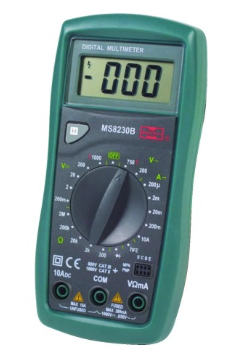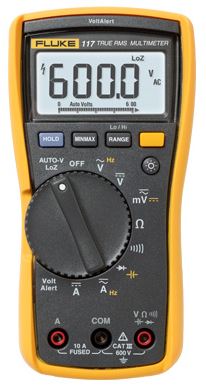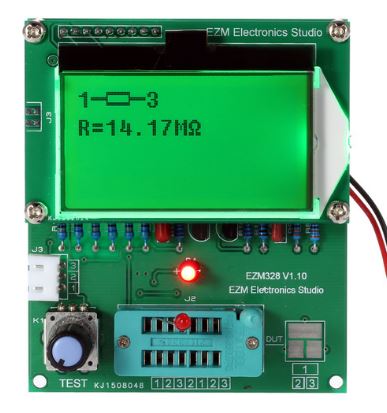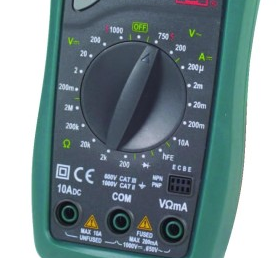
For any electronics work a multimeter is essential. At a minimum you require a meter that can measure volts DC and AC, amps DC and AC and ohms. Most digital meters now have a diode test function and a continuity tester with audible beeper.
If you intend to pursue electronics as a hobby or profession it is well worth purchasing a good quality multimeter. With a little care it will last years or decades.
Choosing a multimeter
For typical electronics projects the most frequent measurements will be as shown below.
| Measurement | Range | Notes |
| DC volts | Up to 20 V DC. | The majority of electronics runs at less than 20 V DC. Micro-controllers run at 5 V or less. Auto electrics are 12 V or 24 V for trucks and busses. |
| AC volts | Up to 240 V AC | Checking mains voltage is a common requirement. This will be 120 or 230/240 V depending on your location. Get a meter and leads rated for three times this. See separate notes below on true RMS measurements. |
| Resistance | 200 Ω to 20 MΩ | A 200 Ω range will give resolution to 0.1 Ω which is good enough for most applications. |
| DC current | 200 µA to 2000 mA | This will cover most non-power applications. |
| DC current | 10 A | Useful for high-current applications, batteries, lamps, etc. |
| AC current | This is not often required. Meters usually have some AC measurement ranges. Again, see the true RMS notes below. | |
| Capacitance | Useful but not essential. | |
| Inductance | Again, useful but not essential. |
True RMS
A multimeter can be assumed to be “average responding” to AC waveforms unless stated as being a “True RMS” type. An average responding multimeter will only meet its specified accuracy on AC volts and amps for purely sinusoidal waveforms. A True RMS responding multimeter on the other hand will meet its specified accuracy on AC volts and current with any waveform type up to a specified crest factor1. Read the meter datasheet carefully to understand exactly what voltage ranges, crest factor range and frequency range is being specified.
Professional quality multimeter
Professional quality multimeters are made by a large number of manufacturers including Fluke, Robin, Kiethley, Keysight Technologies, Tektronix and many, many more.

Fluke has a reputation for well-built good quality test equipment. The 11x range includes several models with the basic ranges required by any electrical / electronics technician. The 117 pictured above has several additional features including frequency measurement, capacitance, min/max recording, display hold and manual range select.
The 117, with some others in the range, feature a LoZ or low-impedance auto-voltage range. Most digital multimeters have an input impedance of 10 MΩ which is high enough to enable it to pick up ghost voltages on non-energised wiring located in close proximity to energised wiring. This condition forms a capacitor and allows capacitive coupling between the energised wiring and the adjacent dead wiring. The LoZ range places a low-impedance load across the probes to shunt the stray voltage and give a zero reading.
The Fluke 117 DMM also includes the built-in VoltAlert non-contact voltage function. Located on the top of the meter above the LCD display, it’s another feature handy for detecting the invisible. The VoltAlert function detects the presence of ac voltage, sounds an audible tone and activates a red LED indicator light on the top center of the LCD display.
Quality versus features
For a given budget I recommend a basic meter with higher specifications and build quality rather than a budget meter with additional features. The better meter should last a lifetime and the additional features can be covered with a multi-function component tester such as the EZM328 for very little additional money.










